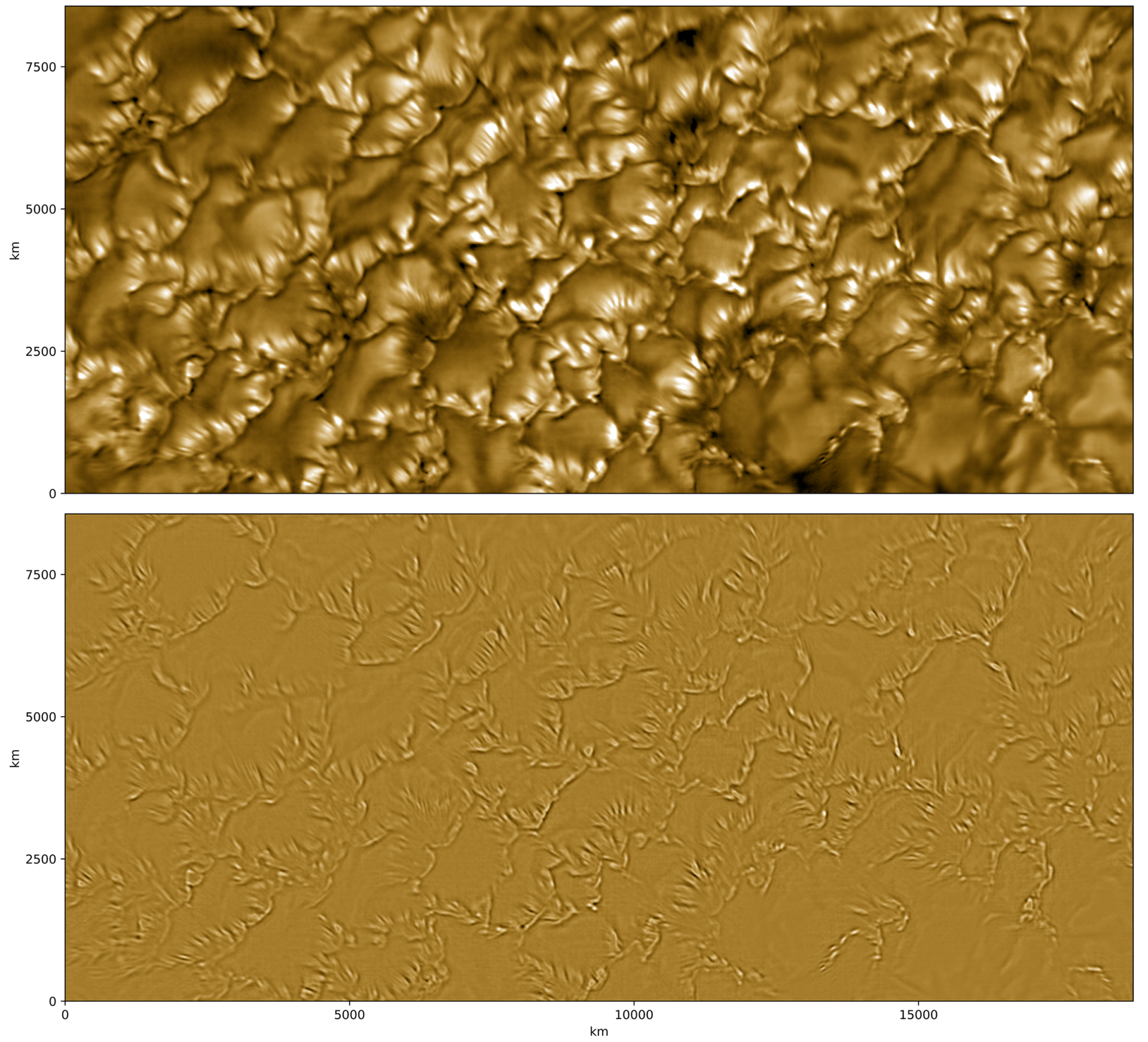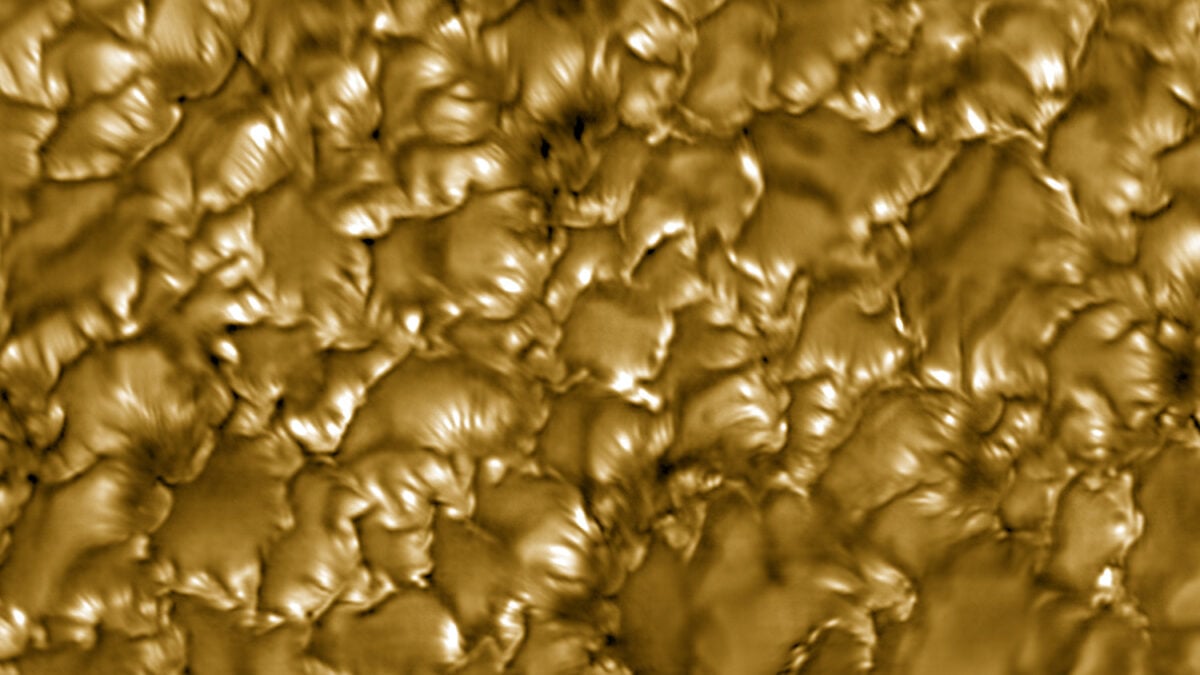Scientists have utilized the world’s largest solar telescope, the Daniel K. Inouye Solar Telescope, to capture unprecedentedly detailed images of the Sun’s surface. These groundbreaking observations reveal ultra-fine magnetic stripes and curtain-like magnetic fields that influence light, offering new insights into solar dynamics. The telescope, a 13-foot (4-meter) instrument perched atop a volcano in Maui, Hawaii, provides a powerful new window into our host star.
A Closer Look at Solar Striations
A team led by National Science Foundation (NSF) scientists observed incredibly narrow bright and dark stripes, known as photospheric striations, rippling across the Sun’s photosphere. These features, detailed in a study published in The Astrophysical Journal Letters, appear on the walls of solar granules—convection cells where hot gas rises from the Sun’s interior. Each striation measures about 12 miles (20 kilometers) wide, roughly the length of Manhattan, which is minuscule on the solar scale.
 Detailed view of photospheric striations, fine thread-like magnetic structures on the Sun's surface captured by the Inouye Solar Telescope.
Detailed view of photospheric striations, fine thread-like magnetic structures on the Sun's surface captured by the Inouye Solar Telescope.
These striations are the visual manifestation of sheet-like magnetic fields that flutter across the Sun’s surface. As light emanates from the granule walls and passes through these “magnetic curtains,” it appears to shift between brightness and darkness. This variation directly correlates with the underlying magnetic field strength: weaker fields appear dark, while stronger fields appear bright. “These striations are the fingerprints of fine-scale magnetic field variations,” stated David Kuridze, a scientist at the National Solar Observatory and lead author of the study, in a statement.
Advanced Observation Techniques and Validation
To achieve these observations, the research team employed the Inouye Solar Telescope’s Visible Broadband Imager. This instrument operates in the G-band, a specific range of visible light particularly sensitive to areas with strong magnetic activity. The scientists then compared the telescope’s high-resolution images with sophisticated simulations designed to replicate the physics of the Sun’s surface. The remarkable agreement between the observed data and the simulated imagery validates the findings and enhances confidence in our understanding of these solar phenomena.
 Comparison of Inouye Solar Telescope image (right) showing solar surface details with a physics-based synthetic simulation (left).
Comparison of Inouye Solar Telescope image (right) showing solar surface details with a physics-based synthetic simulation (left).
“Magnetism is a fundamental phenomenon in the universe, and similar magnetically induced stripes have also been observed in more distant astrophysical objects, such as molecular clouds,” commented Han Uitenbroek, NSO scientist and co-author. “Inouye’s high resolution, in combination with simulations, allows us to better characterize the behavior of magnetic fields in a broad astrophysical context.”
Implications for Understanding Space Weather
The Sun, located approximately 93 million miles (149 million kilometers) from Earth, has governed our solar system for nearly five billion years. Despite its proximity and importance, much about its complex magnetic architecture remains unknown. Studying the intricate details of the solar surface helps scientists unravel the physics behind solar eruptions, flares, and coronal mass ejections. This knowledge is crucial for improving predictions of space weather, which can significantly impact Earth.
Currently, the Sun is at solar maximum, the peak of its 11-year activity cycle, characterized by more frequent and intense solar events. For instance, on May 10, 2024, a G5-class geomagnetic storm—the most extreme classification—struck Earth following large plasma expulsions from the Sun’s corona. This storm, the most powerful in over two decades, caused disruptions to power grids and generated spectacular auroras worldwide. It also increased atmospheric density in low Earth orbit, creating drag that affected satellites.
Understanding the fine-scale magnetic structures like these newly observed striations is a key step toward better forecasting such powerful solar events and mitigating their effects on our technologically dependent society. The Inouye Solar Telescope’s continued observations promise to further illuminate the Sun’s mysteries.










